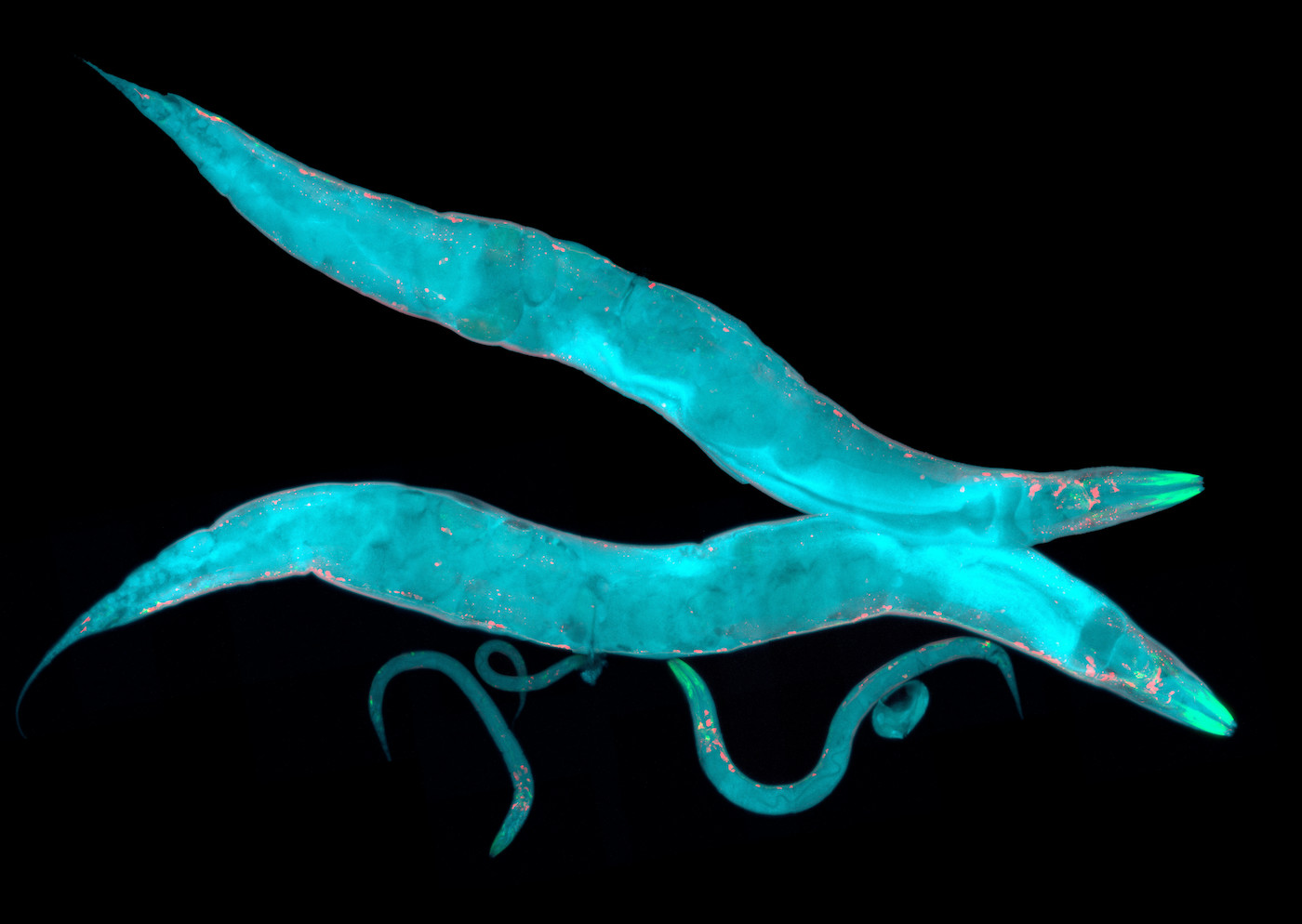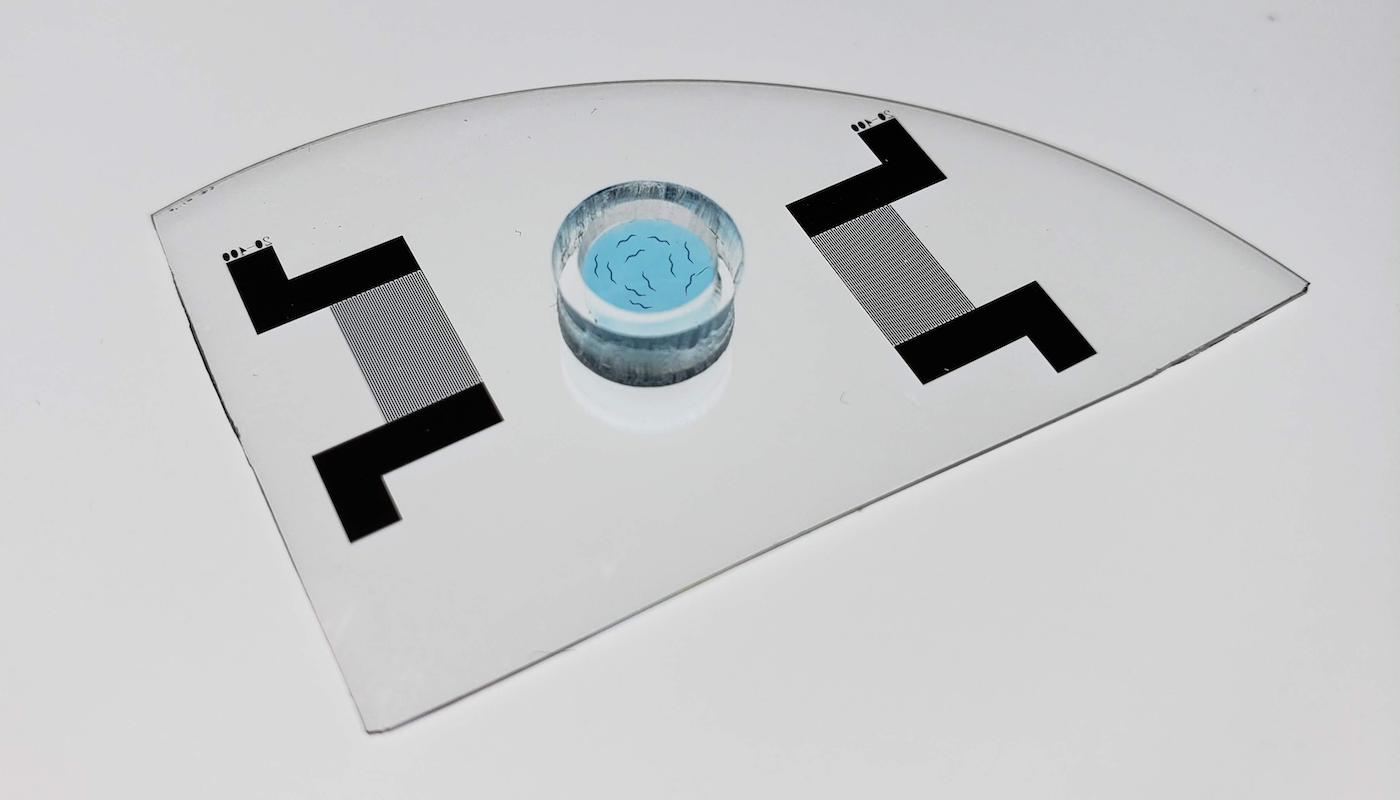Workout Worms May Reveal New Parkinson’s Treatments
5:20 minutes

Scientists built an exercise pool for tiny worms. Why?
A team of researchers at University of Colorado Boulder are looking into ways to help treat people with Parkinson’s and other neurodegenerative diseases. They’re turning to tiny collaborators, C. elegans, worms which measure just one millimeter in length.
These scientists wanted to see how exercise affects brain health by putting a bunch of these worms in an exercise class—in a tiny pool.
Ira talks with the co-author of this fascinating new research, Dr. Joyita Bhadra, post-doctoral researcher at the University of Colorado Boulder.

Correction: At one point, the guest says “significant loss of neurons. She means “significant reduction in loss of neurons.”
Invest in quality science journalism by making a donation to Science Friday.
Joyita Bhadra is a postdoctoral researcher at the University of Colorado Boulder in Boulder, Colorado.
IRA FLATOW: Next, an exercise pool for tiny worms. Yes, all in the name of science. Here’s the back story.
A team of researchers at CU Boulder are trying to help treat people with Parkinson’s and other neurodegenerative diseases. That is no small feat. And to do that they’re turning to trusted collaborators C. elegans. These are tiny worms just 1 millimeter long, and they are often used to study human health. You’ve heard us talk about them before.
The question is, does exercise affect brain health? The method is putting a bunch of these worms in an exercise class. And I’m not talking about weights, but in the water– in a tiny pool, nicknamed Gym-on-a-Chip.
Here to coach us through the new study is Dr. Joyida Bhadra, researcher at the University of Colorado Boulder. Welcome to Science Friday.
JOYITA BHADRA: Thanks for having me.
IRA FLATOW: It’s nice to have you. Before we take a swim in the worm gym, what can C. elegans tell us about the human brain? What do you hope to see here?
JOYITA BHADRA: So C. elegans is a simple organism. However, one third of its body cells are neurons. So we see about 300 neurons in C. elegans. And it’s very easy to visualize under a microscope.
Another reason we use it is because it’s very fast it actually reaches its adulthood within three days. So it gives us an excellent tool to study any age-related diseases because you know you don’t have to wait for months to look at them.
IRA FLATOW: So how does a gym-on-a-chip work? What’s the concept here?
JOYITA BHADRA: OK. So you can think of these as small swimming pools for the worm. We use electrodes to generate a wave on the surface of the chamber, which creates this whirlpool. So the worms need to constantly fight against this whirlpool. In this way, you can actually control the intensity of exercise.
IRA FLATOW: Wow. Years ago, we talked about a shrimp on a treadmill, but never a worm in a pool. And so, as they’re swimming, as they’re exercising against the tide, so to speak, against the whirlpool, what are you looking for?
JOYITA BHADRA: The worms that we use for this particular study are a good model for Parkinson’s disease. So these worms actually have human alpha-synuclein overexpression. So human alpha-synuclein forms these aggregates that are called Lewy bodies. And that can cause neuronal loss in humans. And we can see the same phenotype in worms as well.
IRA FLATOW: Well, can you tell if the exercise does prevent the neurodegeneration?
JOYITA BHADRA: Yes. Actually, it does. So with only five minutes of exercise for two days, we have seen a significant loss of neurons– specifically, the dopaminergic neurons, in these worms.
IRA FLATOW: We know this in humans, that exercise is good for us, right? You’re discovering that exercise is good for neurotransmitters and good for keeping your brain healthy, at least in the worms. Can we apply this to people?
JOYITA BHADRA: The reason for our study is that this video that came up on, I think, CNN and some other news channel, from Cleveland Clinic. Dr. Alberts did some experiments. So one of his patients is a Parkinson’s patient. And he went tandem bike riding with him. And after that, the tremors in his hands almost disappeared.
So this told us, OK, so exercise intensity is important. Because tandem biking is an assisted exercise. Our main goal was to find out what is the optimum intensity and duration of exercise.
What we found is that there is a sweet spot. Too little exercise does not help. And too much exercise also does not help. It’s just this optimum intensity that causes the maximum benefits in response to neuronal loss that we observed in these worms.
IRA FLATOW: Wow. Can you translate that to people, where that sweet spot is?
JOYITA BHADRA: Now, it’s hard to translate that in people. And that’s OK. Parkinson’s disease is an age-dependent disease. Mostly it affects people who are above 60 years old. And it causes these tremors. And then there are problems in movements, which makes it more difficult to exercise.
Our goal is actually to use this device for drug screening. We are looking at the markers that gets changed due to this perfect optimum intensity of exercise. Once we get those, we are going to do a drug screen to identify the targets and see if these drugs can maybe completely replace exercise altogether or maybe enhance the benefits of exercise.
IRA FLATOW: I hope to have you back when you’ve gotten more results.
JOYITA BHADRA: I hope so, too. Thank you very much.
IRA FLATOW: You’re welcome. Dr. Joyita Bhadra is a researcher at the University of Colorado, in Boulder.
Copyright © 2023 Science Friday Initiative. All rights reserved. Science Friday transcripts are produced on a tight deadline by 3Play Media. Fidelity to the original aired/published audio or video file might vary, and text might be updated or amended in the future. For the authoritative record of Science Friday’s programming, please visit the original aired/published recording. For terms of use and more information, visit our policies pages at http://www.sciencefriday.com/about/policies/.
Rasha Aridi is a producer for Science Friday and the inaugural Outrider/Burroughs Wellcome Fund Fellow. She loves stories about weird critters, science adventures, and the intersection of science and history.
Shoshannah Buxbaum is a producer for Science Friday. She’s particularly drawn to stories about health, psychology, and the environment. She’s a proud New Jersey native and will happily share her opinions on why the state is deserving of a little more love.
Ira Flatow is the founder and host of Science Friday. His green thumb has revived many an office plant at death’s door.